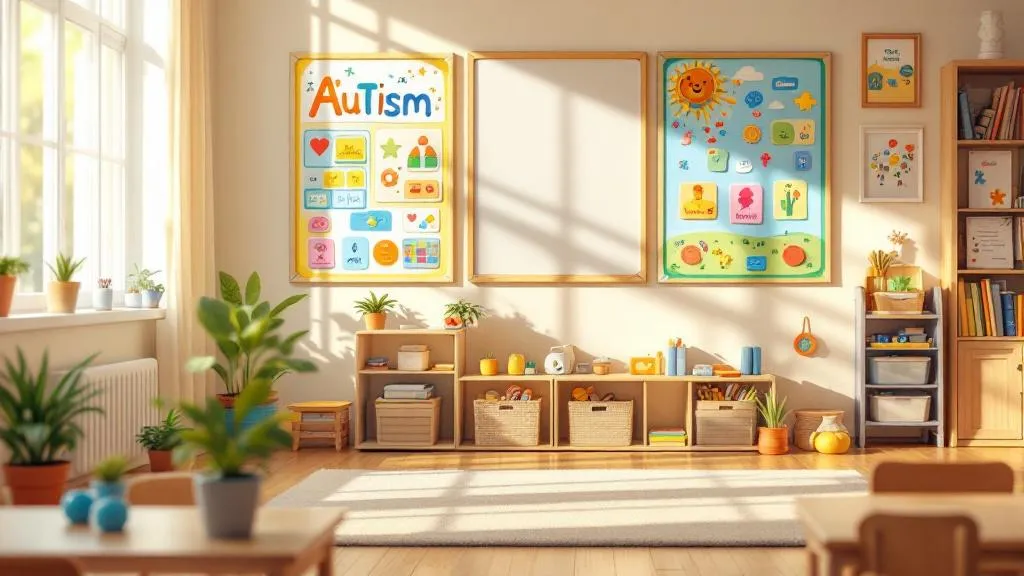Creative Writing for Autistic Individuals: Tips & Techniques
Autism creative writing offers a powerful outlet for self-expression and skill-building. Discover tips, techniques, and tools to make writing enjoyable for autistic individuals.

Key Points:
- Creative writing can be a powerful tool for self-expression and skill-building for autistic individuals.
- Tailored techniques, such as visual prompts and structured frameworks, can make writing more accessible.
- Incorporating sensory-friendly environments and technology can enhance the creative writing experience.
- ABA therapy can complement creative writing by supporting communication and emotional regulation skills.
Autistic individuals often have incredible imaginations and unique ways of seeing the world. Creative writing allows them to channel these strengths into storytelling, building confidence and communication skills along the way. By using tailored techniques, we can make writing a rewarding experience. Let’s dive into practical strategies to inspire them.
Can Creative Writing Benefit Autistic Individuals?
Yes, creative writing can significantly benefit autistic individuals. It provides a safe space for self-expression, helps develop communication skills, and fosters emotional regulation. Writing allows individuals to explore their thoughts and feelings at their own pace, which can be especially helpful for those who struggle with verbal communication.
For many autistic individuals, creative writing also serves as a way to process sensory experiences and social interactions. It can be a tool for building confidence, improving focus, and even developing fine motor skills through handwriting or typing. By tailoring the writing process to their unique needs, caregivers and educators can unlock its full potential.
How to Make Creative Writing Accessible for Autistic Individuals
Creative writing doesn’t have to follow a one-size-fits-all approach. For autistic individuals, accessibility is key. This means creating an environment and process that accommodates their sensory preferences, cognitive strengths, and communication styles.
1. Use Visual Prompts and Story Starters
Visual aids can be incredibly effective in sparking creativity. Many autistic individuals are visual thinkers, so using images, drawings, or even videos as prompts can help them generate ideas.
- Story starters: Provide sentence beginnings like, “One day, I found a mysterious door…” to reduce the pressure of starting from scratch.
- Picture prompts: Use colorful or detailed images to inspire settings, characters, or plotlines.
- Comic strips: Encourage storytelling through sequential art, which can be less intimidating than long paragraphs.
2. Incorporate Sensory-Friendly Tools
Sensory sensitivities can make traditional writing tools uncomfortable. Consider alternatives that cater to individual preferences.
- Weighted pens or pencils: These can provide sensory input and improve focus.
- Noise-canceling headphones: Reduce auditory distractions in busy environments.
- Fidget tools: Allow for movement while thinking or brainstorming.

3. Leverage Technology
Technology can be a game-changer for creative writing for autism. Apps and software can simplify the writing process and make it more engaging.
- Speech-to-text tools: For those who find typing or handwriting challenging, dictation software can be a great alternative.
- Writing apps: Programs like Grammarly or Hemingway Editor can help with grammar and structure without overwhelming the writer.
- Interactive story games: Platforms like Twine allow users to create branching narratives, which can be both fun and educational.
Techniques to Encourage Creative Writing
Once the environment is set up for success, the next step is to introduce techniques that make writing enjoyable and manageable.
1. Break Down the Writing Process
Writing can feel overwhelming if approached as a single task. Breaking it into smaller steps can make it more approachable.
- Brainstorming: Start with simple ideas or themes.
- Outlining: Create a basic structure for the story.
- Drafting: Focus on getting ideas down without worrying about perfection.
- Editing: Revise and refine the story in subsequent sessions.
2. Use Structured Frameworks
Providing a clear structure can help autistic individuals organize their thoughts.
- Story maps: Visual tools that outline the beginning, middle, and end of a story.
- Character profiles: Worksheets that detail a character’s traits, motivations, and relationships.
- Plot templates: Pre-designed frameworks for common story types (e.g., hero’s journey).
3. Encourage Free Writing
Free writing, where the individual writes without worrying about grammar or structure, can be a liberating exercise. It allows for uninhibited self-expression and can help uncover unique ideas.
Building Confidence Through Creative Writing
Confidence is crucial for any writer, and autistic individuals are no exception. Here’s how to nurture it:
1. Celebrate Small Wins
Acknowledge every achievement, no matter how small. Finished a sentence? Great! Wrote a paragraph? Even better. Positive reinforcement can build momentum.
2. Share Their Work
Sharing stories with trusted friends, family, or support groups can provide a sense of accomplishment. For those who are comfortable, consider creating a blog or digital portfolio.
3. Focus on Strengths
Every writer has unique strengths. Some may excel at creating vivid descriptions, while others might have a knack for dialogue or humor. Highlight these strengths to boost confidence.

How ABA Therapy Can Support Creative Writing
Applied Behavior Analysis (ABA) therapy is a well-established approach for supporting autistic individuals in developing communication, social, and behavioral skills. It can also play a role in fostering creative writing abilities.
ABA therapy can help by:
- Improving communication skills: Enhancing verbal and non-verbal communication can make it easier to express ideas in writing.
- Building emotional regulation: Managing emotions can lead to more focused and productive writing sessions.
- Encouraging persistence: ABA techniques can help individuals stay motivated and overcome challenges in the writing process.
By combining ABA therapy with creative writing activities, caregivers and therapists can create a holistic approach to skill development.
Unlock Your Child’s Potential with Discovery ABA
Creative writing is more than just a skill—it’s a gateway to self-discovery and growth. By using the right techniques and supports, autistic individuals can harness the power of storytelling to express themselves and connect with the world around them. Whether through visual prompts, sensory-friendly tools, or structured frameworks, the possibilities are endless.
Discovery ABA provides guidance and tailored strategies that make creative learning both engaging and effective. And with the added support of ABA therapy, the journey becomes even more enriching.
Let’s make autism creative writing a rewarding experience for your child. Reach out to us to learn more about our programs and how we can help with ABA therapy in Maine, Nevada, New Jersey, North Carolina, Utah, Virginia, Tennessee, and New Hampshire.
Does Your Child Have An Autism Diagnosis?
Learn More About How ABA Therapy Can Help
Find More Articles
Contact us
North Carolina, Nevada, Utah, Virginia
New Hampshire, Maine
Arizona, Colorado, Georgia, New Mexico, Oklahoma, Texas
.avif)




































































































